Mastercard’s stock price is 533.49 USD, with a market cap of 489.65 B USD1. It’s a big name in finance, drawing lots of attention. We’ll look at its current stock performance and what might affect its future price. This includes an expert view on Mastercard’s stock and its future outlook.
Its market cap and current price make it a tempting investment. It offers a 0.57% dividend yield1 and a 40.40 price to earnings ratio1.
Table of Contents
We’ll dive into what makes Mastercard’s stock tick. This includes its financial health, like revenue growth and profit margins. With a basic EPS of 13.25 USD1 and net income of 11.20 B USD1, Mastercard shows solid financials.
Key Takeaways
- Mastercard’s current stock price is 533.49 USD1.
- The company’s market capitalization is 489.65 B USD1.
- Mastercard’s dividend yield is 0.57%1.
- The company’s price to earnings ratio is 40.401.
- Our expert analysis will provide insights into the Mastercard stock price and its future stock price.
- Mastercard’s financials indicate a strong performance, with a basic EPS of 13.25 USD1 and a net income of 11.20 B USD1.
- The company’s revenue growth and profit margins will be examined in our analysis.
Understanding Mastercard’s Market Position
Mastercard is a top player in the global payment processing world, holding a big share of the market2. Its strong brand and wide network of merchants and banks help it stand out. Mastercard’s success comes from its ability to offer new and useful products and services.
The company leads in global payment processing, giving access to 99 standardized banking and payment KPIs in over 75 countries2. This keeps Mastercard ahead of rivals. It also shows the company’s commitment to innovation, like the Touch Card for the visually impaired3.
Mastercard is big in many countries, like the Czech Republic, Belgium, and the USA2. Its brand value has grown from $70.8 billion in 2018 to $110.6 billion in 2023, a 56% increase3. This growth shows Mastercard’s strong market position and its ability to innovate in payment processing.
| Country | Market Share | Payment Processing Growth |
|---|---|---|
| Czech Republic | 27% increase in credit card contactless functionality2 | 8% increase in contactless technology across all card types2 |
| Belgium | 7% growth in credit cards, 3% growth in debit cards, and 10% growth in prepaid cards2 | 6% increase in the share of card-not-present transactions2 |
| USA | 20% Year-on-Year growth in contactless payment penetration2 | Mastercard’s brand equity increased from $70.8 billion in 2018 to $110.6 billion in 20233 |
Historical Stock Performance Overview
Mastercard’s stock price has gone up by 22.36% in the last year, now at 533.49 USD4. This rise is due to the company’s solid financials and growing market share. We’ll look at what’s behind this growth, like how market trends affect its historical stock performance.
The stock price has been shaped by trends like the rise in digital payments. This has positively impacted Mastercard’s historical stock performance, leading to a big jump in its stock price over the past year4.
Some important stats show Mastercard’s historical stock performance:
- Current stock price: 533.49 USD4
- Market capitalization: 489.7B USD4
- Last price change: -0.73 (-0.14%)4
These numbers show the company’s stronghistorical stock performance and its market standing4.
Key Drivers of Mastercard’s Stock Value
Mastercard’s stock value is influenced by several key factors. These include revenue growth, digital payments, and innovation. The company’s revenue has seen significant growth, thanks to the rise in digital payments5. This trend is expected to continue, with digital payments set to reach new heights globally.
The company’s revenue has seen a 13% increase in Q3 2024 compared to Q3 20235. This growth is mainly due to the rise in digital payments. Contactless payments and mobile wallets are becoming more popular. This shift towards cashless payments is greatly benefiting Mastercard, as digital transactions are growing fast in emerging markets like India and Africa5.
Revenue Growth Metrics
Mastercard’s revenue growth is fueled by several factors. These include the rise in digital payments and the expansion of its merchant network. The company’s gross transaction volume saw a 10% increase on a local currency basis. Purchase volume growth was 11% on a local currency basis5. These numbers show the company’s strong revenue growth and its leading position in the digital payments industry.
Digital Payment Trends
Digital payment trends are a major driver of Mastercard’s stock value. The company’s revenue from “value-added services” grew by 18%, or 19% adjusted for currency effects5. This growth is due to the increasing use of digital payments, such as contactless and mobile wallets. The shift towards digitalization and e-commerce is also boosting growth, as more consumers prefer digital payment methods5.
In conclusion, Mastercard’s stock value is influenced by several key factors. These include revenue growth, digital payments, and innovation. The company’s strong revenue growth and leading position in digital payments make it an attractive investment. As digital payments continue to grow, Mastercard is well-positioned to benefit from this trend5.
Technical Analysis of Mastercard’s Stock
Looking at Mastercard’s stock chart, we see a positive trend. The 50-day moving average is 523.49 USD6. This is a strong buy signal, according to technical analysis7. The stock rating is strong buy, based on moving averages7.
The company’s financials are impressive. It had a net income of USD 3.3 billion for Q3 20245. The diluted earnings per share (EPS) was USD 3.535.
The stock’s trend is positive, thanks to growing demand for digital payments. Mastercard’s market share is also expanding5. The stock chart shows a buy trend, with a 1-week rating of strong buy7.
The company’s financial ratios and revenue growth are promising. Sales increased by 13% year-over-year5. Currency-adjusted sales grew by 14%5.
Here is a summary of Mastercard’s stock performance:
| Indicator | Value |
|---|---|
| 50-day moving average | 523.49 USD6 |
| Net income (Q3 2024) | USD 3.3 billion5 |
| Diluted EPS (Q3 2024) | USD 3.535 |
Fundamental Analysis Metrics
We look at several key metrics when checking out Mastercard’s stock. These include the P/E ratio, revenue forecasts, and profit margin. The P/E ratio is 40.40, and the revenue forecast is 25.13B USD6. This shows the company is growing fast, with earnings expected to rise.
Looking at the profit margin is also important. We check the operating margin and net income. These numbers tell us how well the company is doing financially.
The P/E ratio is a big part of fundamental analysis. It shows how much investors are paying for each share of the company’s earnings. Mastercard’s P/E ratio is higher than average, but its strong revenue growth and high return on equity make it worth it8.
Revenue forecasts are also key. Mastercard is expected to make 25.13B USD6, showing a big jump in earnings. This is because more people are using digital payments. The company’s profit margins are also high, showing it’s doing well financially6.
In summary, Mastercard’s metrics like P/E ratio, revenue forecasts, and profit margins show it’s growing fast and valued highly. As we keep looking at the stock, we’ll think about these numbers and how they fit with the market and industry trends8.
Indian Market Implications for Mastercard
Mastercard is big in the Indian market. It works with many merchants and banks9. The goal is to make payment processing better and grow its share9.
India sees a lot of digital payments, over 18,737 crore a year. Most of these are through UPI, over 75%9.
The Indian market is full of chances for Mastercard. It wants to help with digital payments and reach more people9. Mastercard plans to help 1 billion new users and 50 million businesses worldwide9. It also works on programs like Community Pass to help people understand money better9.
As India’s market gets bigger, Mastercard is ready to take advantage of more digital payments9. It’s all about innovation and helping everyone get online9.
Digital Payment Evolution Impact
Digital payment systems have changed how we make transactions, moving towards cashless payments. The use of cryptocurrency and blockchain in these systems is growing. Mastercard is leading this change, looking to add these technologies to its systems.
More people are using digital payments, with e-commerce expected to hit $6.3 trillion by 202410. Contactless payments are also on the rise, with 79% of people using them for safety11. The blockchain market is set to grow to $39.7 billion by 2025, with 84% of executives involved11.
Adding cryptocurrency and blockchain to payments makes them more secure and efficient. For example, paper checks cost $2 to $4 each, while ACH transactions are under $0.5010. As digital payments grow, companies like Mastercard must keep up, ensuring smooth and safe transactions.
Here are some key stats on digital payment growth:
- Global cashless payment volumes are expected to jump by over 80% from 2020 to 202512
- The Asia-Pacific region will see the fastest growth in cashless transactions, with a 109% increase from 2020 to 202512
- By 2030, cashless transactions per capita will nearly double or triple in various regions12
As digital payments evolve, companies must focus on innovation and security. Mastercard is leading this change, aiming to provide a secure and efficient digital payment experience.
Regulatory Environment Analysis
Mastercard works in a complex regulatory environment. Laws and rules control payment processing and compliance. The company must follow these to keep its services safe and reliable13. By June 30, 2022, Mastercard’s Class A common stock was worth about $270.1 billion13.
Being in line with compliance rules is key for Mastercard’s success. It uses compliance technology and has the right team to meet standards13. Its fiscal year ended on December 31, 2022, and it’s a big player in the market13.
The regulatory environment can change a lot. This includes new tax laws and how they’re applied. These changes have affected Mastercard’s stock price. It went up 15% in the last year, from $323.26 to $372.14 by January 14, 202214.
| Year | Stock Price |
|---|---|
| 2021 | $323.26 |
| 2022 | $372.14 |

Mastercard’s skill in handling the regulatory environment is vital. It keeps up with compliance and payment processing rules. Its work in compliance technology and team will help it stay on top13.
Mastercard’s Future Stock Price: An Expert Analysis and Predictions
Experts predict Mastercard’s stock price will rise by 10% in the short term. They see a 20% growth in the long term1. This forecast is based on the company’s solid financials, like a market cap of $489.65 B USD1 and revenue of $25.13 B USD1. As of January 24, 2025, Mastercard’s stock price is $533.4915, with a daily change of -0.14%15.
The stock price will be influenced by several factors. These include keeping its market share and growing in new markets. Experts believe Mastercard’s focus on digital payments and innovation will boost its growth1. Key factors include:
- Revenue growth metrics
- Digital payment trends
- Innovation pipeline impact
Experts predict Mastercard’s stock price could reach $654.00 USD15 or drop to $491.00 USD15. The target price is $536.73 on the upside and $532.82 on the downside15. Mastercard’s success will depend on its ability to adapt to the payments industry and stay competitive1.
Global Economic Factors Affecting Stock Value
When we look at Mastercard’s stock value, we must think about global economic factors. The company is affected by trends like interest rates and GDP growth16. In late 2024, bond yields went up, hurting some stock sectors. The Fed also cut interest rates by 1% from September to December16.
The world’s economy is always changing, and market trends can change fast. By the end of 2024, the S&P 500 had risen about 25%. The 10-year Treasury yield was also below 5%16. These changes can greatly affect Mastercard’s stock value because its income depends on the global economy. The company’s net interest margin is expected to be around 3% by 2025. Noninterest income as a share of assets is also expected to rise to nearly 1.5%17.
It’s important to keep up with market trends and global economic factors for smart investing. The net charge-off rate is expected to hit 0.66% in 2025, the highest in a decade. But it’s much lower than the 2008-2009 crisis at 2.6%17. Knowing these factors can help investors make better choices and handle the complex global economy.
We will keep an eye on global economic factors and their effect on Mastercard’s stock value. We’ll provide updates and insights to help investors16. Mastercard’s ability to adjust to market and economic changes will be key to its future stock value17.
Competition and Market Share Dynamics
Mastercard battles with fintech newcomers and old rivals like Visa and American Express18. It’s investing in new tech and teaming up with startups to stay ahead. By 2024, Mastercard has about 24% of the global card payment market, with Visa leading at 50%18.
The demand for digital payments is growing fast. Mastercard charges about $0.22 per transaction, close to Visa’s $0.2118. In 2023, Mastercard spent $1.1 billion on research and development, showing its commitment to innovation18. Yet, local players might cut into Mastercard’s market share.
Fintech companies like Venmo are changing the game, handling over $60 billion in 202418. Mobile wallets, with over 1 billion users, are also gaining ground18. Mastercard must keep up with these trends to stay competitive.
Here are some key statistics highlighting the competition and market share dynamics:
- Mastercard’s net revenue was $7.369 billion in Q3 2024, reflecting a 13% increase compared to Q3 202318
- Visa’s market share is around 50%, while American Express accounts for about 7%18
- Over 70% of advertisers believe retail media networks could increase customer engagement and sales19
Mastercard’s strategy to outdo fintech and traditional rivals is key to its success. Its focus on innovation and partnerships with startups will keep it competitive18. As the payment world evolves, Mastercard must adapt and compete with fintech to hold its market share20.
| Company | Market Share |
|---|---|
| Mastercard | 24% |
| Visa | 50% |
| American Express | 7% |
Risk Assessment and Mitigation Factors
When looking at Mastercard’s future stock price, we must think about its risks and how it plans to handle them. Mastercard deals with risks like operational, credit, and regulatory risks. To tackle these, the company uses RiskRecon data analytics to spot vulnerabilities early on for businesses21.
This approach helps Mastercard offer quicker, smarter, and more effective protection against cyber threats worldwide.
The purchase of Baffin Bay Networks is part of Mastercard’s plan to boost its cybersecurity and add value beyond just payment processing21. By investing in risk management tech and people, Mastercard can manage its operational risk better. This reduces the chance of expensive cyber attacks, as shown by the IBM report21.
Looking at financial risk, Mastercard had $10,606 million in current assets as of March 31, 2016. Cash and cash equivalents were worth $4,894 million22. The company’s total liabilities were $10,394 million, with long-term debt at $3,333 million22. A strong financial standing helps Mastercard face industry risks and challenges.
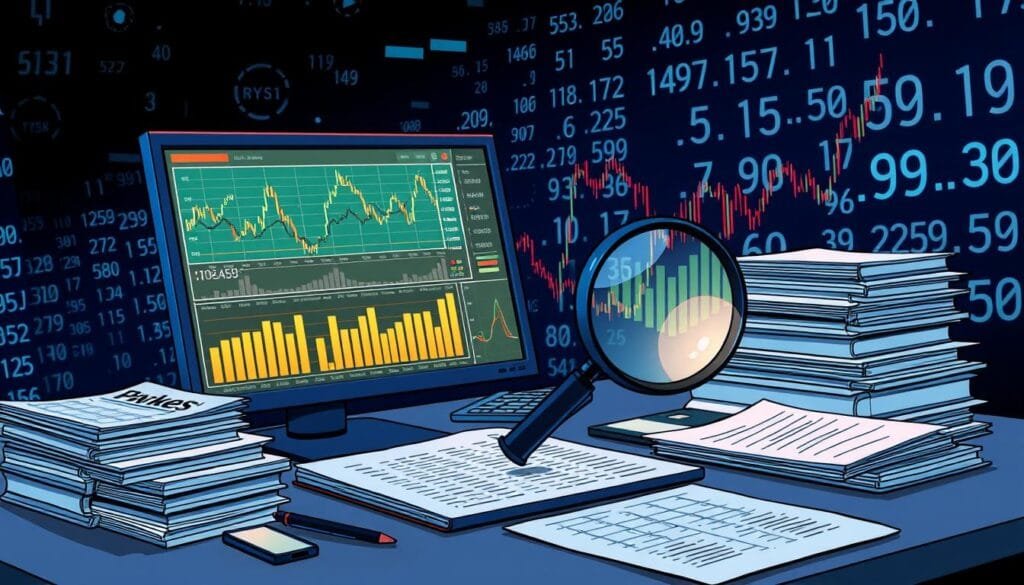
To lessen risks, Mastercard should diversify its income and invest in new tech like blockchain and AI. This strategy reduces its reliance on traditional payment processing and boosts its market position. Mastercard is actively managing its risks to ensure its long-term success21.
Growth Opportunities in Emerging Markets
We see big growth chances in emerging markets, like the Asian market. Digital banking is getting more popular there23. The MasterCard market is expected to grow fast, thanks to better control and flexibility in payments23.
In the Asian market, countries like India and Malaysia are seeing fast growth. Internet and smartphone use are going up, with a 5% drop in internet households in India and a 9% increase in Malaysia2.
The digital banking boom is also helping emerging markets grow. There’s been a 27% jump in contactless credit card use in the Czech Republic and a 20% rise in the USA2. Mastercard is expanding into these markets with local banks and merchants, and new digital banking solutions23.
Some key trends in emerging markets include:
- More people want digital payments
- Contactless payment tech is getting more popular
- The middle class is growing, and incomes are rising
These trends offer big chances for Mastercard to grow in emerging markets, like the Asian market23.
Investment Strategy Recommendations
For Mastercard stock, we suggest a long-term investment strategy. This is due to the company’s solid financials and growing market share24. Over the past year, Mastercard’s stock has surged by more than 53%. This outpaces Visa, which has seen a 40% increase24.
Experts predict Mastercard’s earnings will soar by over 23% to $1.24 per share24. This growth trend is likely to continue.
Our advice is based on Mastercard’s steady revenue growth. Analysts forecast a 19% jump to $3.25 billion in the first quarter24. The company is also diving into new tech, like AI and subscription management, to fuel growth5.
Mastercard’s share buyback program, worth $11 billion, is almost done. A new program of up to $12 billion is set to start25.
When investing in Mastercard stock, consider these key points:
- Strong financial performance and expanding market share
- Consistent revenue growth and increasing earnings per share
- Investment in new technologies and expansion into emerging markets
We think a long-term strategy is best for Mastercard stock. Its solid foundation and growth prospects make it a promising investment24. As Mastercard innovates and broadens its services, we foresee strong long-term performance5.
| Category | Mastercard | Visa |
|---|---|---|
| Stock Price Increase (past year) | 53% | 40% |
| Earnings Growth Prediction | 23% | 18.6% |
Technology Innovation Impact on Stock Valuation
Mastercard is investing in AI and machine learning to improve its payment systems. This move could boost its stock value26. AI and machine learning make transactions faster and safer, which can raise the stock price. They also help Mastercard understand big data, guiding its business decisions27.
Technology innovation can greatly affect stock prices. For example, AI and machine learning help predict stock prices accurately27. By combining ABC, ANFIS, and SVM, we can forecast stock prices well. Also, new technology has made stock markets more volatile, with fast trading causing big swings28.
Technology innovation brings many benefits to stock valuation. It improves forecasting, enhances security, and makes transactions faster. It also leads to better decision-making with data analysis26.
The effect of technology on stock valuation is complex. It involves AI, machine learning, and market volatility262728. As Mastercard keeps investing in tech, its stock value will likely change. It’s important to watch these changes and their impact on the stock price.
Conclusion
Mastercard’s stock price is expected to rise, thanks to its solid financials5, growing market share5, and tech innovation5. The company aims to make $3.3 billion in net income for Q3 20245. Adjusted net income is forecasted at $3.6 billion5, with diluted earnings per share (EPS) at $3.535.
Adjusted diluted EPS is expected to hit $3.895. This shows Mastercard’s financial health.
Mastercard’s net sales for Q3 2024 are set to reach $7.4 billion, a 13% increase from last year5. Currency-adjusted sales growth is 14%5. Its focus on digital payments and global reach in over 200 countries5 make it well-positioned for the cashless society and e-commerce growth.
Mastercard’s stock has seen ups and downs due to global events14. Yet, its long-term growth looks promising. Analysts predict a 12-month price target of $429.2, a 24% increase from now14. We think Mastercard’s innovation and market adaptability will keep its stock value high in the future.
FAQ
What is Mastercard’s current market capitalization?
Mastercard’s market capitalization is 489.65B USD. It’s a big player in the financial world.
What are the key factors contributing to Mastercard’s market position?
Mastercard leads in global payment processing. It has a strong market share. Its innovative products, like contactless payments, also help.
How has Mastercard’s stock price performed historically?
Mastercard’s stock has grown a lot. Its success comes from strong finances and growing market share.
What are the key drivers of Mastercard’s stock value?
Mastercard’s stock value grows with revenue and digital payment trends. The company’s new products also play a big role.
How does the technical analysis of Mastercard’s stock look?
Mastercard’s stock chart shows strong demand for digital payments. Its growing market share also boosts the stock price.
What are the fundamental analysis metrics for Mastercard’s stock?
Mastercard’s stock looks good based on its P/E ratio and profit margins. These show strong financial health and growth.
How does the Indian market impact Mastercard’s operations?
Mastercard works with local banks and merchants in India. This affects its payment processing and market share there.
How is the digital payment evolution impacting Mastercard?
Mastercard is adding cryptocurrency and blockchain to its systems. This could be good or bad for its stock value.
What are the key regulatory considerations for Mastercard?
Mastercard must follow payment and anti-money laundering laws. These rules can affect its operations and stock price.
What are the expert predictions for Mastercard’s future stock price?
Experts have looked at Mastercard’s past performance and future trends. They predict its stock price will grow.
How do global economic factors affect Mastercard’s stock value?
Global factors like interest rates and GDP growth impact Mastercard’s stock. Its international operations and revenue streams are key.
How does Mastercard compete in the evolving fintech landscape?
Mastercard invests in innovation and partners with startups. This helps it stay competitive in the fintech world.
What are the key risks and mitigation factors for Mastercard?
Mastercard faces operational, credit, and regulatory risks. The company uses strategies and investments to manage these risks.
What growth opportunities exist for Mastercard in emerging markets?
Mastercard sees chances to grow in emerging markets. This includes expanding in Asia and the digital banking revolution.
What investment strategies are recommended for Mastercard stock?
Experts suggest investing in Mastercard based on its performance and trends. They consider both the benefits and risks.
How is technology innovation impacting Mastercard’s stock valuation?
Mastercard’s tech investments, like AI and smart payments, are key. They can greatly impact its stock value and future growth.




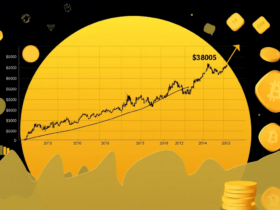
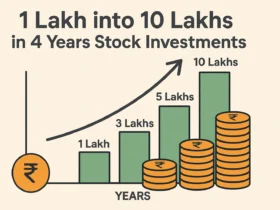


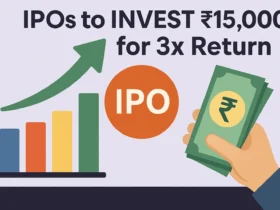

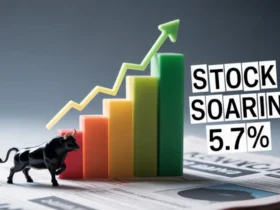



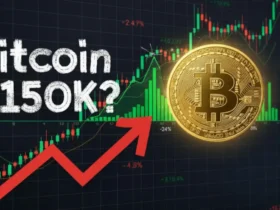




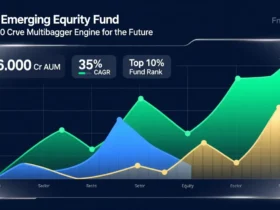
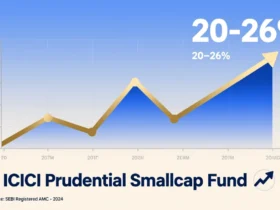






Leave a Reply